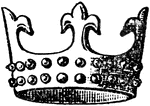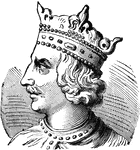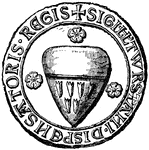Clipart tagged: ‘Henry I’

Crown
"Henry I enriched the plain circlet with gems, and on his great seal the trefoils of his fathers crown…

Crown
"The effigies of Henry II, Richard I, John, and their queens, show the crown to have made such an advance…

Henry I of England
Henry I (c. 1068/1069 – 1 December 1135) was the fourth son of William I the Conqueror, the first…

Seal of Thurstan
The heraldic seal of the archbishop of York, who worked under kings William II of England and Henry…